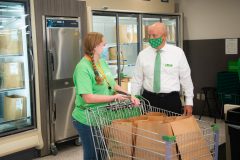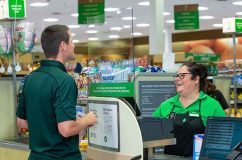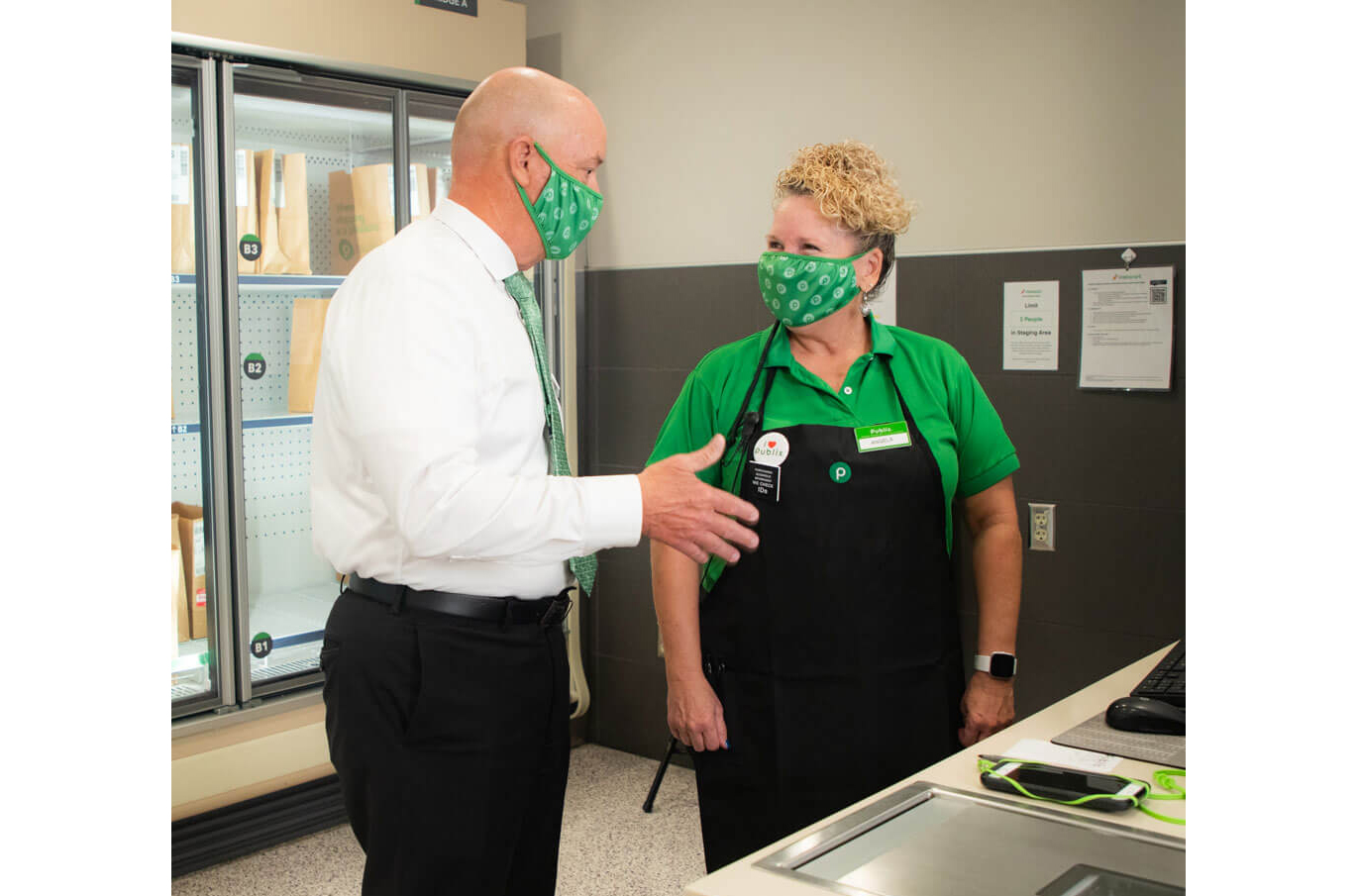Include supply chain, inventory optimization, shopping behavior
No aspect of the supermarket industry has been untouched by COVID-19, and Publix is no exception. To CEO Todd Jones, the pandemic’s legacy likely will be felt for years.
“What’s interesting is, I think we’ll [continue using] terminology that we’ve never used in our entire past,” he said. “I mean, who knew what ‘social distancing’ even was seven or eight months ago? And while I think we’ll transition back to where there’ll be large groups of people back together again, I think that’ll still be a term that’s used moving forward.”
One significant result of social distancing has been a shift in shopping behavior. More customers are opting out of the in-store experience.
“I think that we’ll see the delivery business, or curbside business, [which] obviously moved up pretty quick, continue to grow,” Jones said. “In a short period of time, it probably grew faster than we had anticipated. While I think it’ll come back down to some degree, I don’t think it’ll go back to where it was.
“I still see more people utilize that service. They feel a little more comfortable when they don’t want to be in an environment around a lot of people.”
The supply chain certainly felt the effects of the pandemic.
“The supply chain is one that we all need to step back from, and we all need to figure out how disruption within the supply chain can really put us and our customers in a place that we don’t want to be at,” Jones said.
“I don’t know that we’ll be able to solve that in a short period of time, because when you’re looking at rebuilding manufacturing facilities and warehouses and distribution centers, those take a bit of time to be able to put into place and to solve that. But it’s something that we’re all working on, having the conversations with our business partners to figure out how we can solve those peaks when they rush up like they do.”
Peaks can be common in the industry, particularly in hurricane-battered Florida, but the pandemic has had a sustained impact.
“This one’s been a peak, and it’s been there for a while, it’s been months,” Jones said. “I would tell you going back to 2004, the weather events had the same similar behavior from the consumer, but they were a lot shorter periods. They would go up and come back down, unless there was a damaged area, and then those go up and stay for a period of time.
“When we had a bad weather event right behind [Hurricane Hanna] in Texas not too long ago, we had similar supply chain issues when just two large states within the United States were draining inventory, trying to recover from those. It took probably three or four months to get our supply chain back in place again, to where I would like to see it for customers.”
Jones added that the supply chain could remain a little fragile for some time, as Publix and other grocers work to “understand how that fragileness could actually impact our customers. [It’s] something that we’re working on to make it a much better place long term.”
Another long-term issue likely will be SKU rationalization, or optimizing of inventory.
“Rationalization probably should stick around,” Jones said. “If you look across our store, and you know there’s 34,000 items on average out there right now, that’s probably similar to many of our competitors, somewhere in that range. And there’s many of those items that are very low volume that might not warrant the overall responsibility to carry that product on the shelf today.
“I think there’ll be some SKU rationalization that will stick for a long period of time. Having said that, for Publix specifically, one of our value propositions is variety. So while we’ll have a smaller store footprint than many of our competitors, in just the size of the box, we still want to do everything we can to carry the product mix that the customer is looking for…because that’s what we do.
“We want to make sure that we take care of the customer, so we’re working hard to get those items back in as fast as we can.”
As with many grocers, Publix has enjoyed a boost in center-store during the pandemic.
“If you’re in an urban area versus not, we might have a little bit less center-store business and a little more frequency on the outside of the store, but center-store is still doing well,” Jones said. “And certainly, COVID has boosted it back up a bit. It’ll be interesting to see if it falls back to pre-COVID volume, but we still do really well in the center of the store.”

He added that Publix has made some adjustments to that area of the store.
“It’s smaller than it’s been when I started stocking groceries. The store was capped in size, and 80 percent was center store and 20 percent was all other,” he said. “Today, it’s about 55 percent of our store and 45 percent is all other.”
Private label has been fairly constant at Publix this year.
“There hasn’t been a significant change in private brand versus our business partners’ branded products,” Jones said. “We haven’t seen a significant shift in that.”
When it comes to inventory, the CEO said all of Publix’s stores are on a company-run automated replenishment system.
“All of it’s on a perpetual inventory,” he said. “We’ve got a lot of calculations behind the scenes as far as shelf capacity, the shelf condition we want it to be in, truck deliveries…to give the store the best presentation possible for the customer. Produce is on the same system as well.
“[Perpetual inventory] helps on an allocation tool model. If you know the balance, you know when the stores are receiving it, you know the demand, you know their particular [setup] because we’ve got 1,250 stores. There are 50 unique prototypes out there…it knows all of that and then it knows what the actual balance is, so it knows how to allocate it.”
As an example, Jones offered a scenario where 600 stores are slated to receive toilet paper.
“How can I best allocate those 600 stores based on what they have on hand? [The system] does the best it can to allocate the existing inventory when there are shortages,” he said. “We deal with that all the time in produce…you might want 10 loads of berries, and there’s only eight available, so now your allocations will have to kick into drive.”
As the pandemic continues, conversations with fellow industry players, as well as customers, also will be key.
“Most of [the dialogue] is with the trade associations that we work with, and we spend a lot of time listening to the customer,” Jones said. “Our marketing team, on a much more frequent basis than they have in the past, is constantly asking those customers, what’s the next thing that you’re looking for? What has changed in your life now that this impact has taken place?
“I would want to get more information there than I would on the other side, at least initially, then work on the processes.
“I always like to say, put the C’s before the P’s. Put the customers before the processes. We set up our business model to do that on a regular basis.”
Maria Brous, director of communications for Publix, added that feedback from associates also will help shape the post-pandemic path.
“Part of what we tasked all of the officers with was actually going into the departments – what has worked well during the pandemic? What’s changed? What can we improve on? Internally, we’re working on that, too,” she said. “We’re kind of taking care of the inside or infrastructure of what’s happening with our own associates and departments working together.
“How do we, in this temporary norm, try to figure all of that out? I think the associates and the customers have come before the processes trying to figure that out.”

